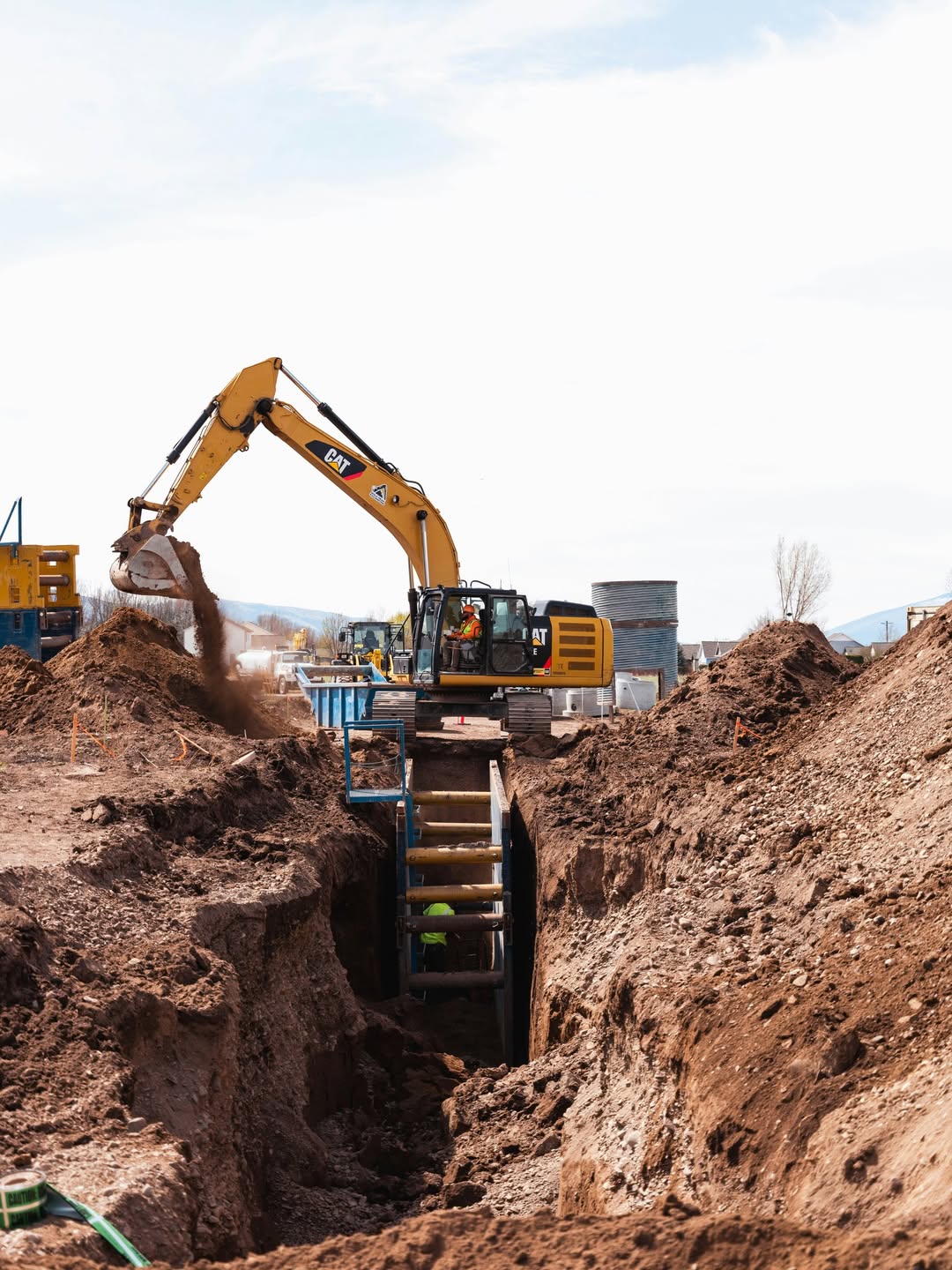Everyone in construction knows that once the plant’s on site, it’s more than just mud you’re dealing with. Without proper precautions, your average site can turn into a danger zone. But here’s the good news: most of these risks are entirely preventable; all it takes is a bit of awareness, planning, and a healthy respect for the machine you’re operating.
Site hazards when working with plant
We’ve rounded up six common hazards to keep an eye out for, and, more importantly, how to stay safe while working around them with heavy plant.
Overhead cables
Overhead cables are pretty unavoidable in most built-up or urban areas, and they’re a serious risk if you’re working with tall plant like telehandlers, cherry pickers or access platforms. One wrong move and you’re looking at damaged kit at best and potentially fatal electrocution at worst.
The key to managing this hazard is awareness. Site engineering teams usually map out cable locations on larger jobs, giving crews the info they need to avoid any nasty surprises. Throw in clear signage and a few well-placed exclusion zones, and you’re already stacking the odds in your favour.
Basically, if your machine’s reaching up high, you need to be looking up as well as ahead. Keep an eye on what’s overhead at all times, it could save a life.
Soft or unstable ground
This one’s a classic. Whether it’s wet clay, loose sand or freshly filled trenches, soft ground can spell trouble. Your plant could tip, sink or get completely stuck, putting both people and machinery at risk.
Soft ground problems get worse after heavy rain, and let’s be honest, this is the UK, so that’s most of the time. Recently backfilled areas can also be especially loose, catching out even experienced operators.
A solid site survey goes a long way in avoiding these pitfalls. Track mats or stabilisers can help if you absolutely have to work on dodgy ground, and it’s always smart to steer clear of edges and slopes where possible.
Poor visibility
If you can’t see what you’re doing, you probably shouldn’t be doing it. Fog, rain, darkness, or just good old-fashioned dust clouds can all turn your site into a hazard hotbed. Blind spots around heavy machinery are already risky, but throw in low visibility, and the chance of hitting someone (or something expensive) goes way up.
Good lighting is a must, especially in winter. We’ve got lighting towers and power generation ready for you to make good use of, so you’ll never be left fumbling around in the dark. Mirrors and cameras are great for eliminating blind spots, and a decent banksman is your best mate in tight or busy areas. Thinking ahead about where and how you position your machine can also make a huge difference.
Pedestrian traffic
Machines and people? Not the best combo when they’re sharing the same bit of ground. High-risk areas like loading bays, site entrances and access routes can quickly turn chaotic if everyone’s doing their own thing, and it’s even worse when the public is involved.
Clear signage, designated walkways and physical barriers help keep things organised and safe. But it’s not just about layout: everyone on site needs to be trained and switched on when it comes to traffic awareness. If you’re operating or driving heavy machinery, you need to know where people are likely to be, and if you’re on foot, stay alert and stick to the paths.
Slopes and uneven terrain
Uneven ground and steep slopes are another big hazard, especially if you’re working with dumpers or excavators. The risk of rollovers, losing control, or just getting stuck goes up when the ground isn’t level.
Planning your travel routes makes a big difference. Don’t just take the most direct line if it means skimming along a concerning incline. Lightening your load can also help with stability. Finally, make sure you’re using machines that are actually rated for the terrain you’re tackling.
Unsecured loads or attachments
Nothing gets the heart rate up quite like a swinging bucket or a rogue muck grab. When plant attachments aren’t properly secured, things can go very wrong, very quickly, especially if you’re rushing or someone’s not properly trained.
The best way to avoid this? Don’t skip the checks or training. Make sure everything’s fitted securely before you start moving off, and ensure everyone has the relevant certificates and qualifications. Operators should be equipped to spot dodgy fittings and know how to secure them properly every time.
Stay safe out there
Staying on top of site hazards is a big part of what separates a smooth, professional job from a chaotic nightmare. Regular crew toolbox talks and hazard reviews don’t take long, and they keep everyone sharp. When everyone’s switched on and proactive, plant hazards become a whole lot easier to manage, and everyone gets to head home in one piece.
Got a construction job coming up? You’ll probably need to hire plant for that. Give us a call on 0330 118 5030 to chat to one of the team about what you need, or look through our site. If you don’t see what you need on there, we can almost always guarantee we’ll find exactly what you’re looking for anyway.
